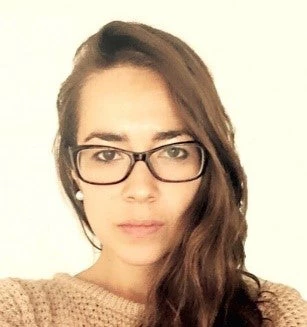 Hand-washing training in Peru
Hand-washing training in Peru
WSS Facilities & Menstrual Hygiene Management in Rural Schools of Latin America
How memorable is your “first period story”?
Were you at school? Did you dare to tell a friend or teacher?
Did you have a proper functioning bathroom to run to, with a door you could close?
And for the male readers: have you considered what it would be like, as a teenager, to be surprised by a first period during class, surrounded by your school peers?
While menstruation is a normal and healthy part of life for women, the impact of menstruation—and particularly a first period— in a poor-income setting presents difficult challenges for young girls and women and can easily turn into a nightmare. Inadequate infrastructure, such as the lack of gender-segregated private bathrooms, and the quantity, quality, and coverage levels of such facilities put the health and safety of girls and women in jeopardy. The lack of sanitary pads and lack of arrangements for proper disposal of pads, present additional burdens. An inadequate WSS environment for acceptable Menstrual Hygiene Management (MHM) creates health risks and may constitute a cause for dropping out of school, among other negative impacts on the community (UNICEF, 2017).
Schools in rural Latin America often lack the adequate sanitation facilities and supplies girls need for managing their periods. For instance, Peru’s first School Infrastructure Census (CIE) in 2013 showed that two out of three schools did not have access to adequate WSS services. This figure is significantly higher in rural areas, where an astonishing 83 percent of schools had inadequate services or did not have any WSS services at all.
However, we also know that this information is incomplete—which is worrisome!
The Peru 2013 Census did not include certain questions pertinent to the status of WASH infrastructure, such as: Do the restrooms have doors with locks? Are there differentiated restrooms for boys and girls? How many toilets are functioning correctly at any given time? Are liquid soap dispensers for hand-washing available? Is the restroom equipped with necessary sanitary pad disposal mechanisms? To tackle MHM in rural schools, we must first and foremost close the information gap.
Within this context, to better understand the WSS gap in rural schools, the Water Practice team in Peru joined forces with the Ministry of Education to develop the SIASE methodology (Sistema Integral de Agua y Saneamiento Escolar). SIASE is an organized and comprehensive system of WSS indicators in a school setting (both inside and surrounding the school premises). Its analysis allows us to identify the interventions that are necessary to provide a complete and quality service, at both local and national levels.
The SIASE methodology consists of four steps:
- Definition of indicators considering access, water storage and pumping systems, suitability of the restrooms, the existence of water drinking fountains, and rainwater drainage network. Flowcharts for each indicator help establish the required intervention type. As an example, the graph shows the flowchart for the restroom suitability indicator.
- Definition of standards, to guide the identification of WSS intervention needs by considering the input, process, and outcome of any intervention. The input focuses on revising the institutional framework and preparing an inventory of the national and sectoral regulations; the process aspect analyzes the country norms and compares these with international regulations; finally, the outcome aspect provides regulatory recommendations and intersectoral actions proposals.
- Identification of the intervention needs by quantifying the levels of WSS access and quality, and the demands to calculate the magnitude of the needed intervention.
- Estimation of the WSS services gap for schools by defining the cost unit for each indicator, based on the intervention needs identified and the results of the regulation and norms analysis.
In short, the SIASE methodology allows for the identification of investment needs in school WSS infrastructure in Peru and can, in turn, be relevant for neighboring countries. Because of this, the Water Practice’s Advisory and Analytics Rural Water Services and Sanitation (ASA RWSS) Initiative has taken notice and is disseminating the case among its members. The initiative is designed within the framework of SDG6 and seeks to contribute towards the strengthening of the WSS agenda in rural areas and small-towns in the Latin American and Caribbean (LAC) region by providing important contributions to the following thematic areas: inclusion, resilience, and institutions. A key theme includes gender, hygiene promotion, and sanitation behavioral change.
So, while SIASE is a useful tool for planning purposes to be used by the authorities or stakeholders in the public and private sector, both at sub-national and national levels, the methodology also emphasizes the need to, as a first step, focus efforts on consensus building. It is crucial to bring all stakeholders around a common agenda regarding WSS in rural schools and MHM.
Another valuable country experience is from Bolivia. The Government of Bolivia, in collaboration with UNICEF, forms part of the Global Water in Schools for Girls Project (WinS4Girls) focused on the promotion and capacity development for MHM through WASH programs in schools. UNICEF developed and implemented a communication strategy, including a training scheme, that facilitated the preparation of a comprehensive MHM package and a scheme for its application. The Bolivia experience is a valuable one, as it demonstrated the relevance of advocacy at the local, departmental and national levels, and highlighted the value of working with local academic partners.
These two initiatives are managing to position MHM in the agendas of their respective Education, Health, and Water and Sanitation sectors. However, there is still a long way to go region-wide. The ASA RWSS Initiative will continue to disseminate these experiences and methodologies, along with other valuable learning from the region, to ensure that good experiences are shared in view of securing the well-being of school girls and female teachers. Ultimately, we want each schoolgirl’s first menstruation story to be one of joy, comfort, security, with the expected and normal doses of nerves and laughs.




Join the Conversation